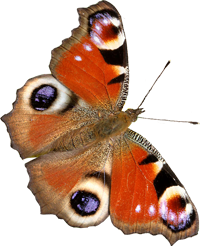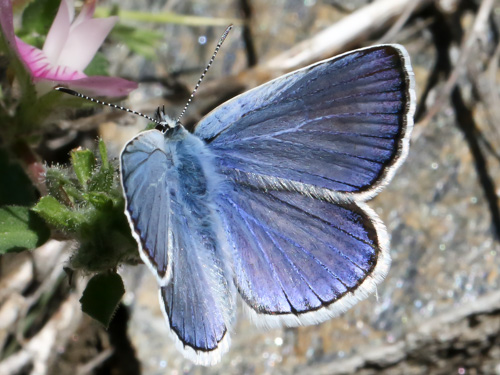
Valais, Switzerland, July 2021
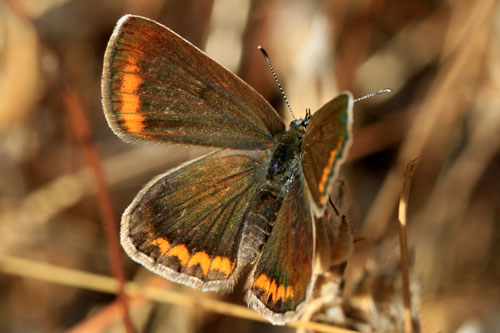
Montes Universales, Spain, July 2011
Female.
Field notes and information
This butterfly is can be difficult to identify as there are some very common similar species.
Identification & Similar species: It has a generally large feel to it. Markings are bold. The upperside blue is bright and bold. Underside submarginal orange marks extend to the apex of both wings. In space 3/4 of the underside hindwing there is a large white chevron that often extends beyond the post discal spots and points to somewhere just below the cell spot - some other species have this chevron but it is accompanied by others of similar size between the submarginal lunules and the post discal spots.
It lacks the underside forewing cell spot of the common blue, Polyommatus icarus, and the upperside andriconal scales of the Chapman's blue, Polyommatus thersites.
Distribution & Flight: It flies sporadically across southern Europe north to the southern Alps. Extremely rare in Morocco where it has only been recorded once - the collected specimens still exist. It has a single brood but can be found throughout the summer in different localities.
Habitat & Behaviour: Flowery places, often with dry rocky slopes.
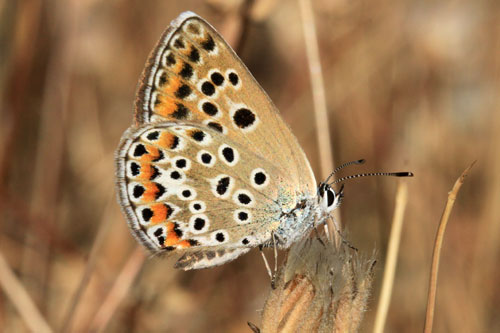
Montes Universales, Spain, July 2011
Female.
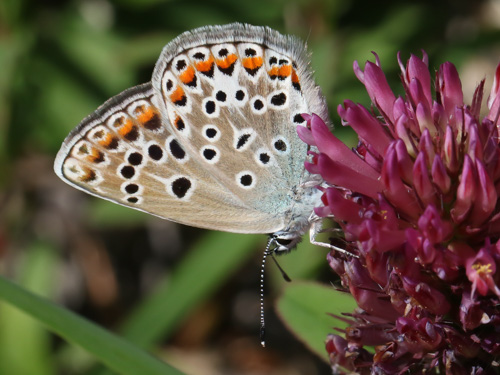
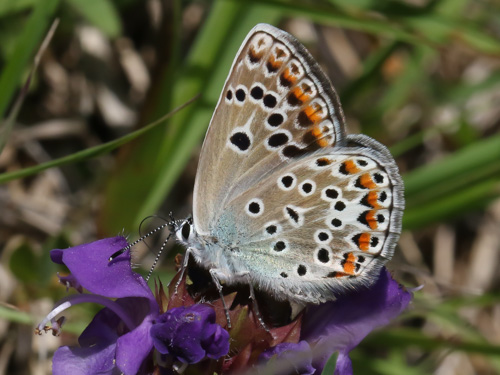
Valais, Switzerland, July 2021
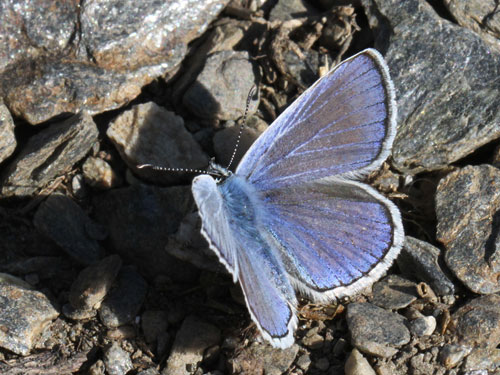
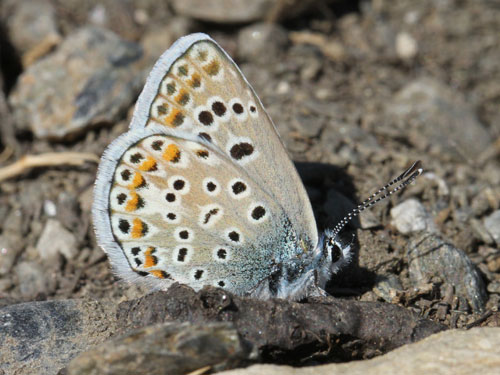
Sierra Nevada, Spain, July 2013
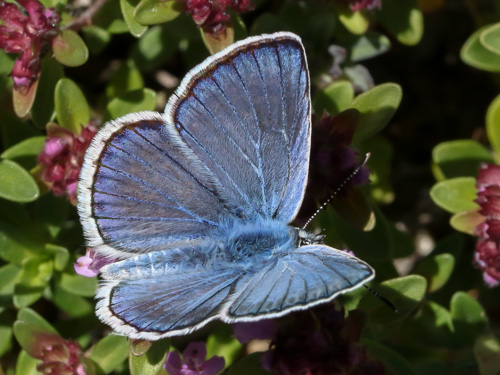
Valais, Switzerland, July 2021
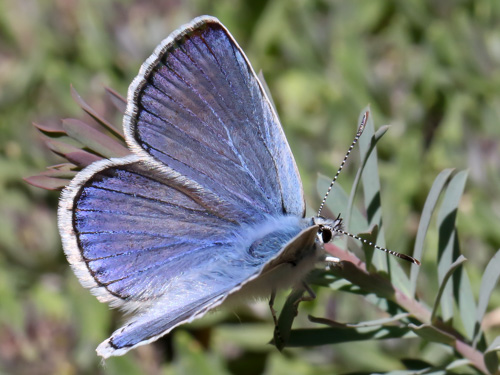
Valais, Switzerland, July 2021
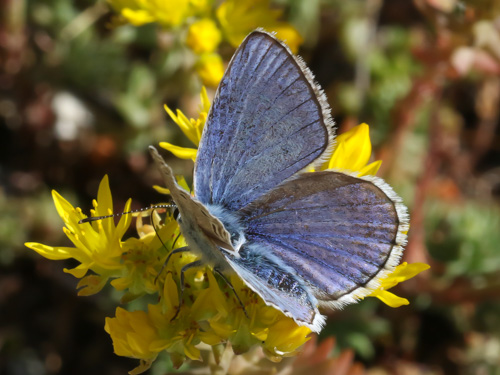
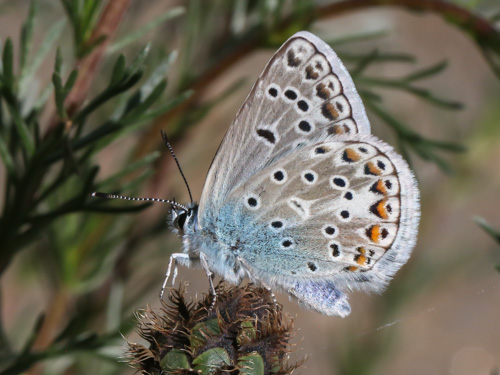
Valais, Switzerland, July 2019
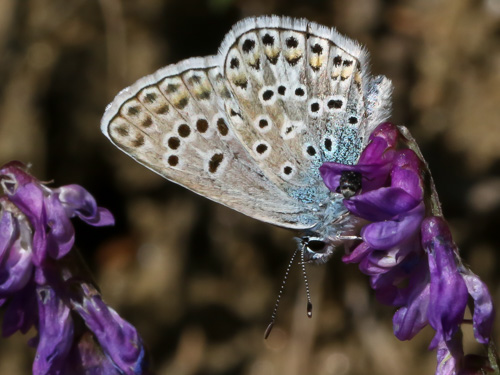
Valais, Switzerland, July 2021
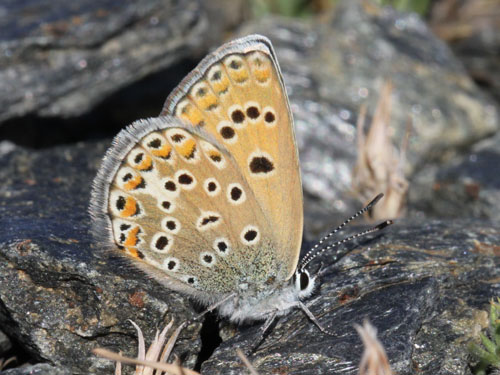
Sierra Nevada, Spain, July 2013
Female
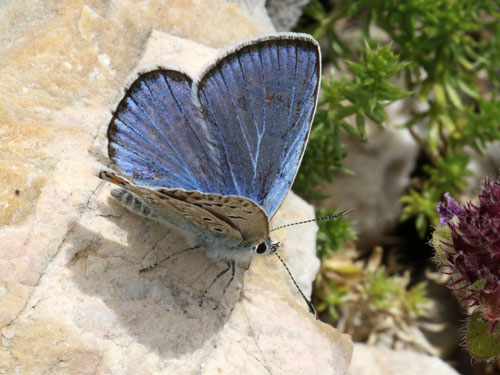
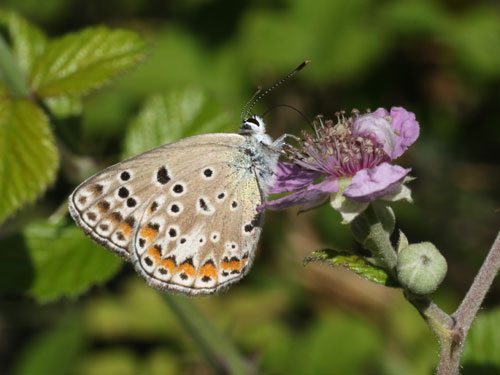
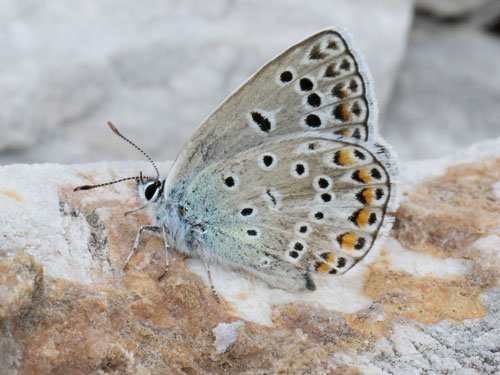
Mt Phalakron, Greece, July 2016
Ssp. dalmaticus, much brighter blue than ssp. escheri.
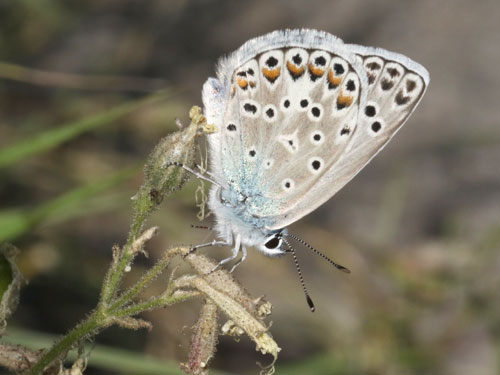
Valais, Switzerland, July 2015
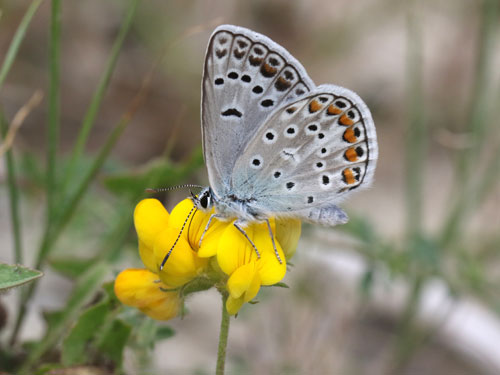
NW Greece, July 2016
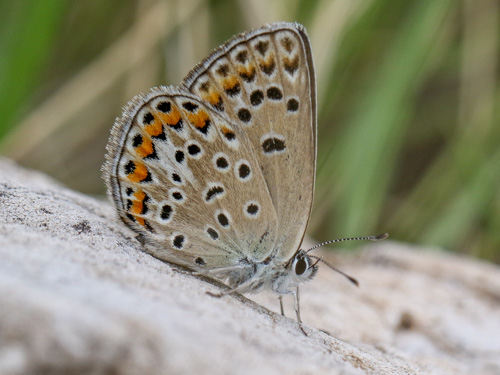
Peloppenesos, Greece, July 2018
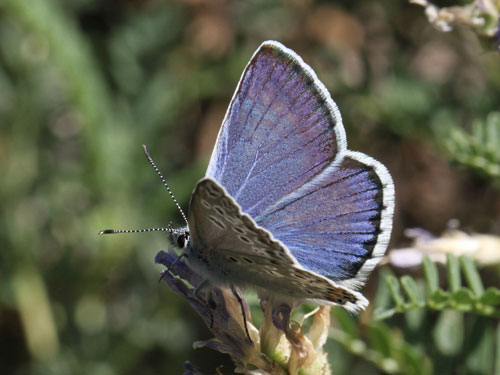
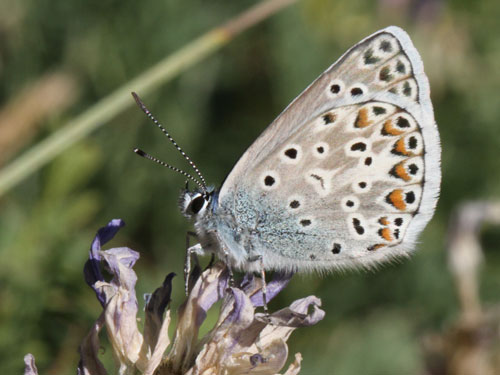
Piedmont, Italy, July 2010
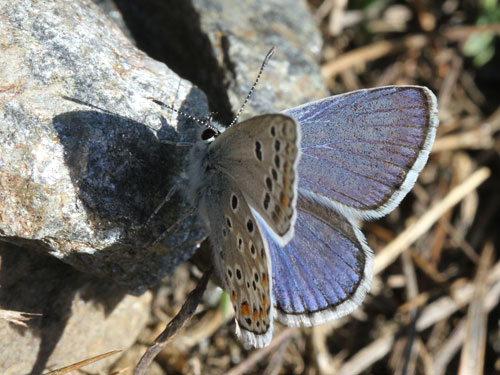
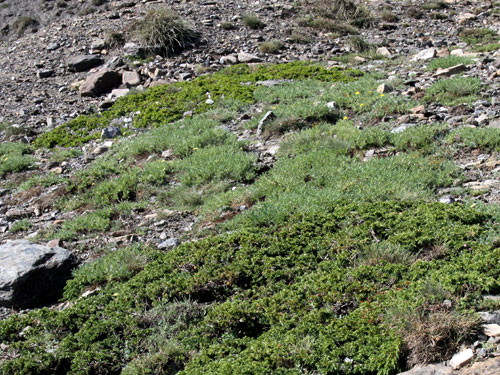
Sierra Nevada, Spain, July 2013
